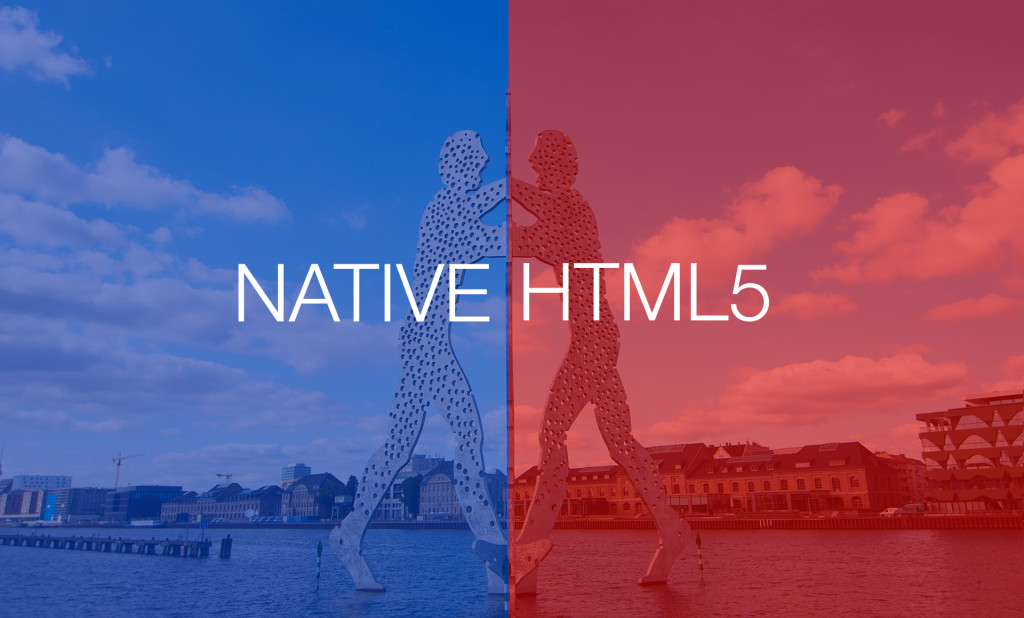Native vs. HTML5 – Why We’re Going Hybrid

July 18, 2013
Share
Ever since we got the green light to start an iPad application for FRONTLINE, the main question we’ve gotten from tech people is whether we’re going to have an app at all – or whether we’re going to build an HTML5 web application akin to the (excellent) Financial Times or New York Times tablet-optimized sites.
This debate is never-ending in the technology industry, but it’s typically more focused on text and image-heavy applications, as opposed to the video-centric application we’re building.
There are obvious benefits to the web approach: wide support across both Apple’s iOS and the many Android platforms, the ability to iterate quickly, and the fact that we already have web developers in house. It is also cheaper to maintain because the same back-end systems can power both our desktop and tablet web sites. Finally native app development is quite expensive.
There are also some advantages to the native code approach: We can explore new types of interactive experiences using features that are only available to native IOS applications. Users may be less likely to install web applications on a home screen, discouraging repeat use. And from a user-interface standpoint, native apps are smoother experiences than can be achieved using mobile browsers. My expectation is that many of these limitations will disappear soon — especially with technologies like WebRTC in the pipeline — but the platform is just not there yet for complicated video applications.
So at a certain point we realized that we had to take the native route. The question then became: What we could do knowing that we’d want to eventually want to move the whole endeavor into a more flexible HTML5 application? Our FRONTLINE app is still in the early planning stages, but our expectation is that we can render much of the browsing experience and additional content using iOS’s UIWebView, which will make it easier to take the new viewing experience we’re creating to other platforms — we’ll get there, Android fans, we hear you! — and our existing web site.
We also plan to build an area of the app where we can pursue more experimental interactive narratives like our recent David Coleman Headley’s Web of Betrayal or the well-known Snow Fall series from The New York Times. Although they’ll be an integral part of the app, these are going to be designed and built as HTML5 experiments. Most of the interesting work in this space is done in the browser now, and it seems foolish to lock ourselves into proprietary technologies when things are shifting so rapidly.
After much deliberation and conversation, this hybrid approach seems like the best way to move forward, allowing us to ensure a good, fluid user experience, to be available in the app store but to invest in other, more flexible technologies for the long term. I’m interested to hear what other people think.
Latest Documentaries
Policies
Teacher Center
Funding for FRONTLINE is provided through the support of PBS viewers and by the Corporation for Public Broadcasting. Additional funding is provided by the Abrams Foundation; Park Foundation; the John D. and Catherine T. MacArthur Foundation; and the FRONTLINE Journalism Fund with major support from Jon and Jo Ann Hagler on behalf of the Jon L. Hagler Foundation, and additional support from Koo and Patricia Yuen. FRONTLINE is a registered trademark of WGBH Educational Foundation. Web Site Copyright ©1995-2025 WGBH Educational Foundation. PBS is a 501(c)(3) not-for-profit organization.


















